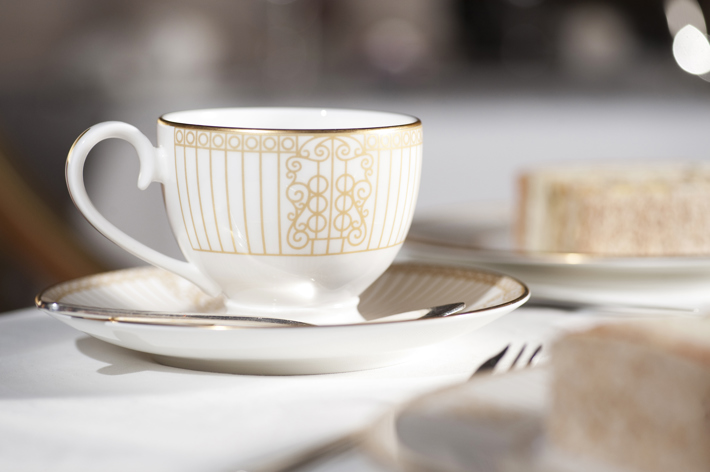
Scotland’s influence in the British tea scene
Discover Scotland's legacy in British tea culture ahead of our opening of the renowned 100 Princes Street.
26 May 2022
Discover Scotland's legacy in British tea culture ahead of our opening of the renowned 100 Princes Street.
26 May 2022
When seeking to unravel British culture, it is typical that tea lands top of the list of quintessentially British traditions. But as we look forward to the opening of 100 Princes Street, curiosity into where Scotland lies in this tradition and what influence the Scots had on the British tea scene is provoked.
Perhaps unbeknown to most, Scotland’s role in the British tea scene was significant. Tea first came to Britain in the seventeenth century by the East India Tea Company. Whilst it was popularised by the Duchess of York, Mary of Modena, its popularity across the public sphere can be credited largely to Scottish botanists and entrepreneurs alike.

A notable figure in the popularisation of tea beyond the aristocracy alone is the Berwickshire born botanist, James Fortune. Fortune introduced 250 species of plant to Britain and her colonies in the nineteenth century, one of which was the Chinese tea bush, Camellia Sinensis in 1843. Fortune’s acquisition of this plant, however, was not a simple pursuit; it was an expedition that involved travelling into the Chinese provinces of Fujian and Guangdong whilst masquerading as a Chinese national to avoid travel restrictions placed upon westerners at the time. This undercover adventure marks a milestone in the development of the British tea scene as Fortune smuggled tea seeds from China into India, and by doing so, disrupted China's monopolisation of tea production.
Fortune’s venture into China’s undisclosed tea production was met with greater fortitude upon arrival in India when a Scottish tea-making alliance was formed between himself and Robert Bruce, a Major in the Bengal Artillery. Twenty years prior to Fortune’s expedition, Bruce discovered tea leaves growing wild in the jungles of Assam, India. Upon this discovery, he began the task of clearing the jungle to create the first commercial tea plantations outside of China. Fortune’s smuggling of Chinese tea seeds twenty years later saw the two join forces as they attempted to grow the seeds in Bruce’s nurseries of Assam. The difference in climate however – the Camellia Sinensis seeds being used in the cooler climates of higher elevations – caused the seeds to fail and were consequently sent to the foothills of the Himalayas in Darjeeling, where medical doctor and keen botanist Archibald Campbell assisted. From the initial failure of the Chinese tea seeds then, a Scottish trio of Fortune, Bruce, and Campbell was born and can be accredited for exposing the Darjeeling and Assam teas that we enjoy so fondly today.

The entrepreneurial-minded Scots did not just travel to India to market on the boom of tea production; many also travelled to Ceylon (now Sri Lanka) to capitalise on the increase in coffee production. Amongst these was James Taylor, born in Kincardineshire in 1835. Whilst Taylor began his ventures in coffee production, which was equally booming in the nineteenth century, he inserted himself into the tea making world as Hemalia Vesetrix took hold of the coffee estates, destroying the crops and output. Taylor, however, persevered and requested tea seeds from the botanical gardens in Calcutta. This segue from coffee to tea was vastly influential: tea has been grown in Ceylon ever since, and Taylor's influence on this has culminated in his reputation as “the father of Ceylon tea”.
So, whilst tea is certainly a tradition relevant to Britain in its entirety, Scotland’s influence cannot be overlooked. Fortune, Bruce, Campbell, and Taylor each contributed to making the drink the delight that it is today, and we hope that when you enjoy a cuppa with us here at 100 Princes Street, you can bask in the legacy of Scotland’s tea-making history.
Want to know more about the rich heritage of our new property? Unravel the stories behind the iconic location of 100 Princes Street.
Discover more